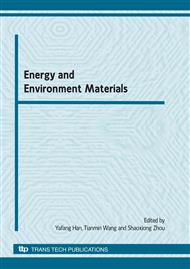p.295
p.302
p.308
p.313
p.320
p.324
p.330
p.336
p.343
Preparation and Mechanical Property of Super-Light Aluminum Foam
Abstract:
Aluminum foams with low relative density, especially less than 0.1, persist unique physical, mechanical and acoustic properties. There is a need of this modern material for special applications and scientific research. However, preparation of this super-light metal foam is quite difficult for the cell size of the foams would increase with its porosity. In this study, carbon fibers are used as novel stabilize additive for aluminum foams and the influence of alloying elements on cell wall thickness and area of Plateau border are studied. The results indicate that the cell wall thickness and bubble coarsening rate of the foam would decrease much when Mg is added into the melt and the relative density of prepared foam can be as low as 0.08. Results of compressive tests reveal the fact that these aluminum foams show a lower compressive strength. The plastic deformation region of this new foam is long and it performs good energy absorption capacity.
Info:
Periodical:
Pages:
320-323
Citation:
Online since:
May 2010
Authors:
Keywords:
Price:
Сopyright:
© 2010 Trans Tech Publications Ltd. All Rights Reserved
Share:
Citation:


